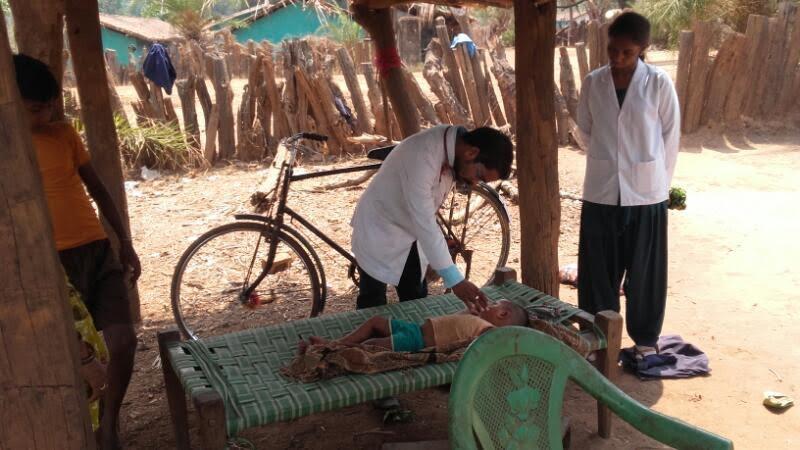Tribal Population Health and Healthcare Alarming than ‘Other’ Castes: Report

Image Used for Representational Purpose Only
The tribal population continues to suffer disproportionately from health problems, compounded by problems of healthcare access and quality, concludes an expert committee on tribal health.
According to the recently released report by the committee, jointly constituted by the Ministry of Health and Family Welfare and Ministry of Tribal Affairs in 2013, the tribal people are facing the burden of diseases. While malnutrition and communicable diseases like malaria and tuberculosis continue to be rampant, non-communicable diseases like diabetes, hypertension and cancer as well as mental health problems, especially addiction, have increased among tribes.
Titled as ‘Tribal health in India - Bridging the gap and a roadmap for the future’, the report relied on data from National Family Health Survey, National Sample Survey Organisation, National Institute of Research in Tribal Health (NIRTH), studies done by civil society, and outlaid a comprehensive report on Tribal Health, compiled by a 12-member committee comprised of prominent academicians, civil society members and policymakers under the chairmanship of Dr. Abhay Bang.
The report pointed out that the government does not have any comprehensive plan for the development of tribal people, including health. According to official data, almost 90 per cent of tribal population lives in rural areas, and there are 90 districts or 809 blocks with more than 50 per cent tribal population, and they account for nearly 45 per cent of ST population in the country. Over two-third of them are working in the primary sector, while heavily dependent on agriculture, working either as cultivators or as agricultural labourers.
Revealing the poor economic status of these communities, the report stated that overall 40.6 per cent of the ST population lived below poverty line as against 20.5 per cent of the non-tribal population in the country. Besides, there has been a low access to basic amenities among these communities - only 10.7 per cent of the tribal population has access to tap water as against 28.5 per cent of non-Scheduled Tribes and nearly 74.7 per cent of tribal people continue to defecate in the open.
The committee identified ten special health problems that affect the tribes disproportionately. They are: malaria, prevalence of malnutrition, child mortality, maternal health, lack of family planning, addiction, sickle cell disease, animal bites and accidents, health illiteracy and deterioration of children’s health in ashramshalas.
Healthcare
As per the present norms, tribal and hilly areas should have one health sub-centre per 3000 people, one primary health centre per 20000 people, and a community health centre per 80,000 people. In contrast to this, the committee found that in about half of the states, the health institutions in tribal areas were deficient in number by 27 to 40 per cent as compared to the present norms. These figures are alarming as nearly 50 per cent of the outpatient visits by tribal people are to the public hospitals and more than two third of the indoor hospitalisations of tribal population is in government health services.
“Despite the high reliance of the tribal people on the public health care system in Scheduled Areas, it continues to be characterized by low output, low quality, and low outcome delivery system, often targeting wrong priorities. Therefore, restructuring and strengthening of the public health care system should be the highest priority for the ministry of health and family welfare both at the centre and in the states,” the report concluded.
Beside availability of funds under Tribal Sub Plan, an instrument of inclusion of ST population, the report stated that the percentage expenditure shown under TSP remained to be a “mere accounting exercise” because various ministries show the regular services (that they would in any case have to provide in tribal areas) under TSP, whereas the additional expenditure in these areas, which is the mandate of TSP, remains unstated.
The committee recommended three essentials of financing tribal health: strict adherence to TSP guidelines ensuring additional allocation by Health Ministries (Centre and states) to public health allocation and expenditure in tribal areas, in proportion to the share of ST population, to a total of Rs. 15676 crores and ensuring that 70 per cent of this is spent on public health care, total public expenditure on tribal health is increased to Rs 2447 per capita. This will bring to the level equivalent to 2.5 per cent of the national GDP, matching the goal to the new National Health Policy 2016; efficient funds flow from the government matched by transparent accounts financial monitoring, and reliable data.
The flow chart is the committee’s proposed governance structure of tribal health.
Get the latest reports & analysis with people's perspective on Protests, movements & deep analytical videos, discussions of the current affairs in your Telegram app. Subscribe to NewsClick's Telegram channel & get Real-Time updates on stories, as they get published on our website.























